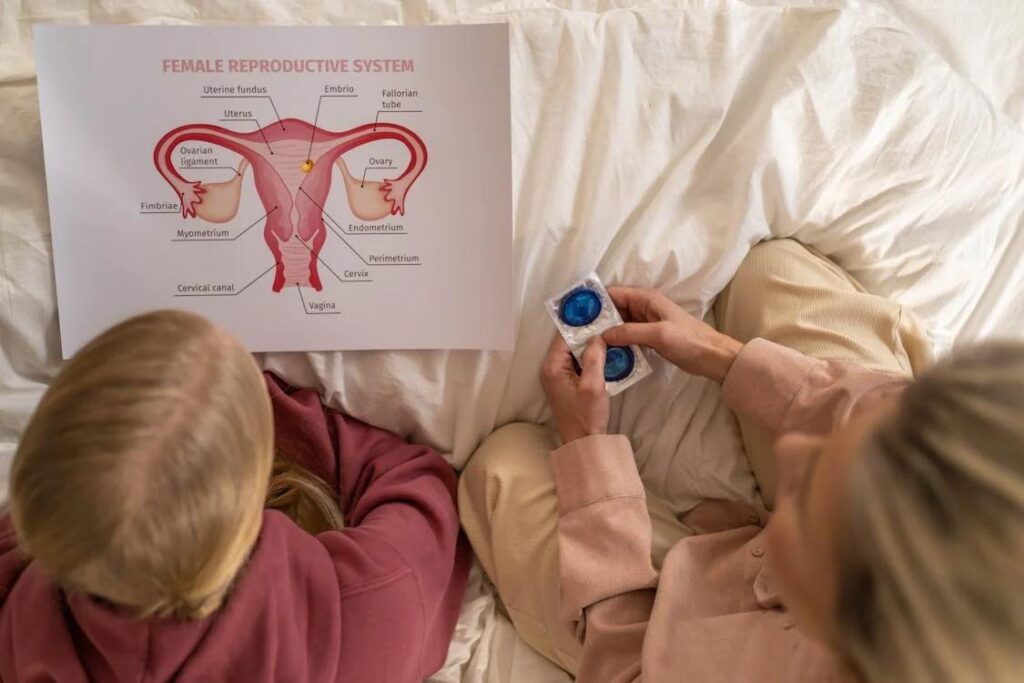Yeast infections are a common health condition caused by an overgrowth of a type of fungus known as Candida. This condition can affect various parts of the body, with the most common cases occurring in the mouth, skin folds, and genitals. Understanding the symptoms, causes, and remedies for yeast infections is important for managing this condition effectively.
Symptoms of Yeast Infections
Recognizing the symptoms of yeast infections is the first step in addressing the issue. While symptoms can vary depending on the affected area, some common signs include:
General Symptoms:
- Itching or irritation in the affected area
- Redness and swelling
- Pain or discomfort, especially during certain activities
- White, thick discharge (commonly described as resembling cottage cheese)
Genital Yeast Infections (Women):
- Vaginal itching and burning
- Pain during urination or intercourse
- Vaginal discharge that is thick and odorless
Genital Yeast Infections (Men):
- Red rash or spots on the penis
- Itching or burning around the head of the penis
- White discharge under the foreskin
Oral Thrush:
- White patches on the tongue, cheeks, or throat
- Soreness or pain in the mouth
- Difficulty swallowing
Skin Yeast Infections:
- Rash in warm, moist areas of the body (e.g., under breasts, between toes, or in skin folds)
- Cracking or peeling skin
- Red, itchy patches that may ooze or become crusty
Causes of Yeast Infections

Understanding the causes of yeast infections can help in preventing recurrences. Candida, the fungus responsible for yeast infections, is naturally present in the body. However, certain factors can disrupt the body’s natural balance, leading to overgrowth.
Common Causes:
- Antibiotics:Antibiotics can kill beneficial bacteria in the body, allowing Candida to thrive.
- Weakened Immune System:Conditions such as diabetes, HIV, or undergoing chemotherapy can increase susceptibility.
- Hormonal Changes:Pregnancy, menstruation, or the use of hormonal contraceptives can trigger an imbalance.
- High Blood Sugar Levels:High sugar levels in the bloodstream provide an ideal environment for Candida to grow.
- Moisture and Warmth:Wearing tight or non-breathable clothing, especially in warm climates, creates conditions that favor fungal growth.
- Poor Hygiene:Inadequate hygiene can contribute to the spread and persistence of yeast infections.
- Dietary Factors:Excessive consumption of sugar and processed foods can promote fungal overgrowth.
Remedies for Yeast Infections
Managing yeast infections involves a combination of medical treatments and lifestyle adjustments. Prompt action can alleviate symptoms and reduce the risk of recurrence.
Medical Treatments:
- Antifungal Medications:These are available in various forms, including creams, ointments, oral tablets, and suppositories. Commonly used antifungal agents include clotrimazole, miconazole, and fluconazole.
- Prescription Treatments:For severe or recurrent infections, doctors may prescribe stronger antifungal medications or a longer course of treatment.
Over-the-Counter Options:
- Topical Antifungals:Topical antifungals are available without a prescription. These creams or ointments are applied directly to the affected area.
- Probiotic Supplements:Probiotics may help restore the natural balance of bacteria and fungi in the body.
Home Remedies:

- Yogurt:Plain, unsweetened yogurt contains live cultures that can restore healthy bacteria.
- Coconut Oil:Known for its antifungal properties, coconut oil can be applied to the skin to soothe symptoms.
- Tea Tree Oil:Diluted tea tree oil has antifungal properties but should be used with caution as it may irritate sensitive skin.
- Garlic:Some studies suggest that garlic has antifungal properties, although more research is needed.
Lifestyle Adjustments:
- Wear loose-fitting, breathable clothing to minimize moisture and heat.
- Avoid scented soaps, detergents, and feminine hygiene products that may disrupt natural balance.
- Maintain good hygiene practices, including drying thoroughly after bathing.
- Limit sugar intake and follow a balanced diet to discourage fungal growth.
Preventive Measures
Preventing yeast infections involves adopting habits that reduce the likelihood of Candida overgrowth.
Tips for Prevention:
- Maintain Proper Hygiene:Regularly clean and dry areas prone to moisture.
- Wear Breathable Fabrics:Cotton and moisture-wicking materials can help keep skin dry.
- Limit Antibiotic Use:Only use antibiotics when prescribed by a healthcare provider.
- Monitor Blood Sugar Levels:If diabetic, maintain optimal blood sugar control.
- Avoid Douching:This can disrupt the natural balance of bacteria and fungi.
- Practice Safe Sex:Using protection can reduce the risk of spreading infections.
Additional Prevention Strategies:
- Change out of wet clothing, such as swimsuits, as soon as possible to reduce moisture exposure.
- Regularly wash undergarments in hot water and avoid fabric softeners that can irritate sensitive skin.
- Stay hydrated to support overall skin and body health.
When to See a Doctor
While many yeast infections can be treated with over-the-counter remedies, there are times when medical intervention is necessary.
Seek Medical Advice If:
- Symptoms persist after treatment
- Infections recur frequently
- You experience severe symptoms, such as extensive redness, swelling, or pain
- You are pregnant or have a weakened immune system
A healthcare professional can provide a proper diagnosis and recommend suitable treatments. In some cases, recurring yeast infections may indicate an underlying medical condition requiring attention.
Diagnostic Tests:
- Microscopic Examination:A sample from the affected area may be examined under a microscope to confirm Candida overgrowth.
- Culture Test:In persistent cases, a culture test may be performed to identify the specific Candida species.
- Blood Tests:For systemic infections, blood tests can detect Candida in the bloodstream.
Additional Information on Recurrent Yeast Infections

Recurrent yeast infections can be a sign of an underlying health issue. Identifying and addressing these triggers is essential to long-term management.
Common Triggers for Recurrence:
- Chronic Health Conditions:Diabetes and autoimmune disorders can increase the risk.
- Hormonal Imbalances:Fluctuations in hormones may lead to repeated infections.
- Medication Use:Long-term antibiotic or corticosteroid use can disrupt the body’s microbial balance.
Long-Term Solutions:
- Collaborate with a Healthcare Provider: Identifying underlying conditions such as diabetes or immune system dysfunction is essential for a comprehensive treatment plan. In some cases, tests for underlying infections (such as bacterial vaginosis) may be necessary.
- Consistent Hygiene and Dietary Regimen: Proper hygiene is key, but it’s important to avoid overly harsh or fragranced soaps that can irritate the genital area. Probiotic-rich foods like yogurt or fermented products may help restore a healthy bacterial balance in the body.
- Periodic Antifungal Treatments: Some individuals may require maintenance antifungal treatments, either oral or topical, especially in cases of frequent infections. These should always be used under a healthcare provider’s guidance to ensure appropriate dosage and duration, preventing resistance.
The Impact of Lifestyle on Recurrence:
- Smoking Cessation: Smoking not only affects overall health but can impair the immune system, increasing the risk of infections, including oral thrush. Quitting smoking can significantly lower the likelihood of recurrent yeast infections, especially in the oral and vaginal areas.
- Regular Physical Activity: Exerciseboosts the immune system, improves circulation, and helps regulate blood sugar levels. These factors can contribute to a healthier immune response and a reduced risk of infections, including yeast overgrowth.
- Limiting Alcohol Intake: Excessive alcohol consumption can weaken the immune system and disrupt the balance of gut microbiota, creating an environment where yeast can thrive. Reducing alcohol intake supports a healthier immune system and microbial balance in the body, lowering the risk of recurrence.
Get the Documentation You Need with My Dr’s Note
Managing yeast infections involves recognizing symptoms early, addressing underlying causes, and following appropriate remedies. For those experiencing recurrent infections, obtaining a real doctor’s note for work or school from My Dr’s Note, or considering FMLA certification services, can provide the necessary documentation for leave or accommodations..
To access an online doctor’s note for work, contact My Dr’s Note today!


